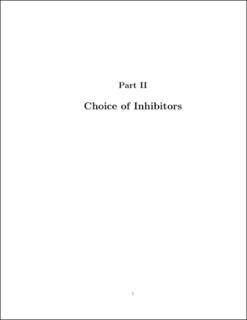| dc.contributor.author | Jevremovic, Ivana | |
| dc.contributor.author | Chen, Ying-Hsuan | |
| dc.contributor.author | Altin, Abdulrahman | |
| dc.contributor.author | Erbe, Andreas | |
| dc.date.accessioned | 2020-04-07T08:17:31Z | |
| dc.date.available | 2020-04-07T08:17:31Z | |
| dc.date.created | 2020-04-05T21:00:26Z | |
| dc.date.issued | 2020 | |
| dc.identifier.isbn | 978-3-527-34618-9 | |
| dc.identifier.uri | https://hdl.handle.net/11250/2650596 | |
| dc.description.abstract | In this chapter, we will briefly review the systematics of corrosion inhibitors and the classical mechanisms of action of corrosion inhibitors, the latter with an emphasis on inhibitors interacting with the material surface. The different roles corrosion inhibitors have in protecting materials surfaces will be described – with examples from applications in the oil and gas sector, but also more general. We will discuss in some detail the interaction of an imidazoline‐based surfactant inhibitor with mild steel and the interaction of 2‐mercaptobenzothiazole (MBT) with copper and zinc. By adsorbing to surfaces, molecules in general block sites for metal dissolution. Good inhibitors furthermore react with dissolution products to form insoluble films, in analogy to the formation of conversion coatings. Furthermore, inhibitors may interfere with the kinetics of the cathodic reaction. Over decades, a challenge for the use of inhibitors has been leaching into the environment of inhibiting molecules. Modern triggered release concepts ensure that inhibitors become available only if a corrosion attack has begun. Such triggered release systems have successfully been used for the self‐healing of coatings, and we will discuss one example of the interaction of a cyclodextrin with MBT to see how this works for inhibitors. Future applications in the oil and gas sector may consider the use of intelligent coatings. | en_US |
| dc.language.iso | eng | en_US |
| dc.publisher | Wiley | en_US |
| dc.relation.ispartof | Corrosion Inhibitors in the Oil and Gas Industries | |
| dc.title | Mechanisms of inhibitor action - passivation and self-healing | en_US |
| dc.type | Chapter | en_US |
| dc.description.version | acceptedVersion | en_US |
| dc.source.pagenumber | 359-382 | en_US |
| dc.identifier.doi | 10.1002/9783527822140.ch15 | |
| dc.identifier.cristin | 1805342 | |
| dc.description.localcode | Locked until 14.2.2021 due to copyright restrictions. This is the peer reviewed version of an article, which has been published in final form at [https://doi.org/10.1002/9783527822140.ch15]. This article may be used for non-commercial purposes in accordance with Wiley Terms and Conditions for Self-Archiving. " | en_US |
| cristin.ispublished | true | |
| cristin.fulltext | postprint | |
| cristin.qualitycode | 1 | |
